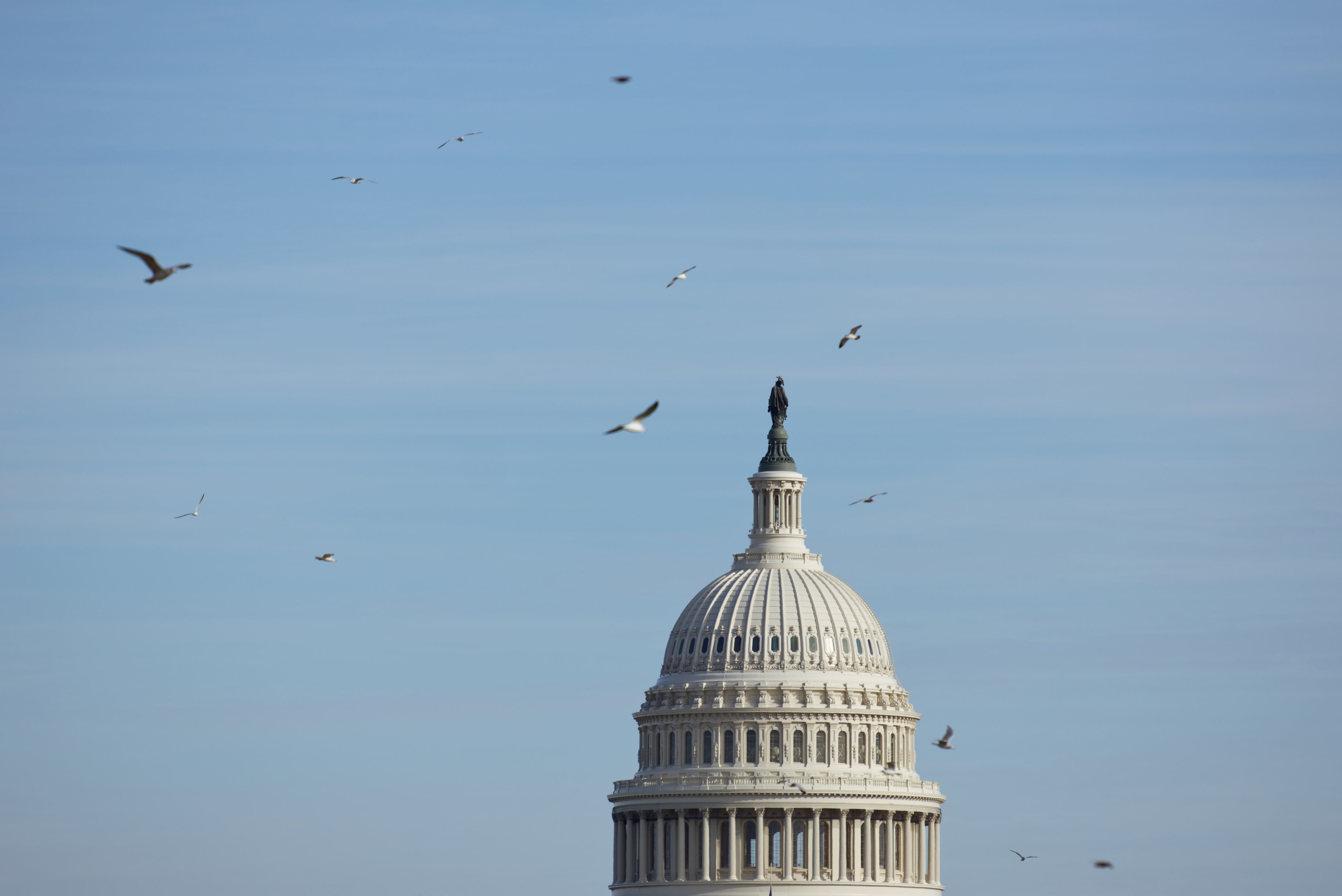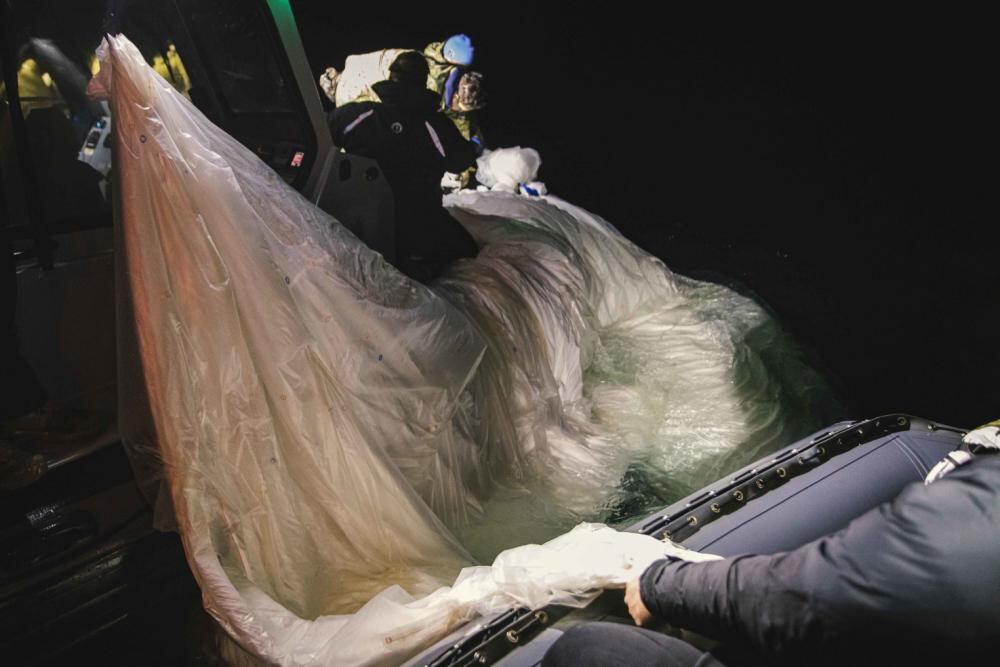WASHINGTON — A senior Pentagon official on Thursday tried to justify the military’s decision not to shoot down a Chinese balloon as soon as it entered Alaskan airspace by highlighting the dangers doing so would have posed to the recovery and examination of its surveillance equipment.
Melissa Dalton, the assistant secretary of defense for homeland defense and hemispheric affairs, spoke to lawmakers days after the U.S. shot down a high-flying balloon off the South Carolina coast, and on the same day a senior State Department official revealed additional details about the balloon’s spying capabilities.
“A key part of the calculus for this operation was the ability to salvage, understand and exploit the capabilities of the high-altitude balloon,” Dalton said before the Senate Appropriations Committee’s defense panel. “And we look forward to sharing that with you in a classified setting and openly as we learn more.”
She noted that bursting the balloon over Alaskan waters would have translated into “a very different recovery operation.” The Bering Sea can reach depths exceeding 13,000 feet, with below-freezing winter temperatures and ice cover in its northern portion. All of that “can be extremely dangerous” and “induce additional risk,” she said.
The Chinese balloon carried an array “likely capable of collecting and geolocating communications,” according to the State Department official, who provided details on the condition of anonymity. It was further rigged with solar panels large enough to feed “multiple active intelligence collection sensors,” the individual said.
The Defense Department ultimately chose to shoot down the balloon Feb. 4 with a missile fired from an F-22 jet, but concerns about the potential for civilian casualties delayed the decision for several days.
Defense Department officials shared additional information about the balloon’s capabilities and its ongoing recovery in a closed-door briefing with the full Senate. But the explanation has not done much to sway senators already critical of the Defense Department’s decision-making.
After the classified briefing, Sen. Marco Rubio of Florida dismissed the value of recovering the balloon’s surveillance equipment as “overblown.”
“I hope I can be proven wrong, but this is not very sophisticated technology,” said Rubio, the top Republican on the Intelligence Committee. “We know what it is. We know it collects electronic signals. It takes high-resolution imagery probably. We know what the payload is. I don’t think this is somehow some exquisite technical capability. It’s just very crafty ways of maneuvering it.”
Signals intelligence involves the harvesting of information from electronic systems, such as radar or weapons, for defense purposes. Such operations have long been in the U.S. playbook.
Rubio also said he doesn’t “dismiss the notion” that shooting the balloon down over U.S. soil could kill people on the ground, but said that risk must be weighed “against the possibility that it could malfunction, that it could have a self-destruct mechanism that could bring it down.”
The chair of the Senate Appropriations defense panel, Sen. Jon Tester, D-Mont., also expressed skepticism after the public hearing with Dalton that the recovery effort necessitated allowing the balloon to cross the country, where it loitered above nuclear silo fields at Malmstrom Air Force Base, in his home state.
“I get it,” Tester said, “but what makes that compelling or not is what information they were able to collect.”
Exactly what China had its eye on or was in search of was not publicly clear.
The House on Thursday passed a nonbinding resolution, 419-0, that condemned China for violating U.S. sovereignty and called on the Biden administration to provide “comprehensive briefings” on the incident, including “an assessment of what surveillance data [the People’s Republic of China] was potentially able to collect or transmit via the balloon while it was over United States territory.”

The U.S. initially inspected the balloon from afar, with U-2 spy plane flybys and high-resolution photography, according to the State Department. The senior official there said the balloon’s kit was “inconsistent” with what one would find aboard a weather balloon, as China described it.
Both the Defense and State departments said the balloon, some 2,000 feet tall, was part of a larger, established surveillance effort employed by China, likely at the behest of its military.
At least four other balloons have traveled across the U.S., according to Brig. Gen. Patrick Ryder, the Pentagon press secretary. The State Department official accused China of deploying “these surveillance balloons” over more than 40 countries and five continents.
“In terms of where they’re coming from, I can’t go into the specific location other than to say: ‘China,’ ” Ryder said Feb. 8. “And the last thing I’ll say is that this last week provided the United States with a unique opportunity to learn a lot more about the Chinese surveillance balloon program, all information that will help us to continue to strengthen our ability to track these kinds of objects.”
Beijing scolded Washington for the popping of what it claims was a civilian research balloon blown astray. China’s defense minister, Wei Fenghe, rejected a request to speak to U.S. Defense Secretary Lloyd Austin immediately after the takedown, according to Ryder.
“Lines between our militaries are particularly important in moments like this,” he said. “Unfortunately, the [People’s Republic of China] has declined our request.”
Bryant Harris is the Congress reporter for Defense News. He has covered U.S. foreign policy, national security, international affairs and politics in Washington since 2014. He has also written for Foreign Policy, Al-Monitor, Al Jazeera English and IPS News.
Colin Demarest was a reporter at C4ISRNET, where he covered military networks, cyber and IT. Colin had previously covered the Department of Energy and its National Nuclear Security Administration — namely Cold War cleanup and nuclear weapons development — for a daily newspaper in South Carolina. Colin is also an award-winning photographer.





